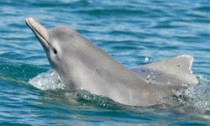
A team of researchers says it has identified a new species of humpback dolphin. Physical and genetic evidence suggests that cetaceans found in waters off northern Australia are distinct within the humpback family. This general group grows up to 2.4m in length and inhabits coastal waters from the Atlantic to the Pacific. The evidence for the distinct species in northern Australia is outlined in the academic journal Molecular Ecology.
“Based on the findings of our combined morphological and genetic analyses, we can suggest that the humpback dolphin genus includes at least four member species,” said co-author Martin Mendez, from the Wildlife Conservation Society’s Latin America and the Caribbean programme.
Dr Mendez added: “This discovery helps our understanding of the evolutionary history of this group and informs conservation policies to help safeguard each of the species.”
The authors analysed physical data gathered mostly from beached dolphins and museum specimens. Specifically, the team examined features from 180 skulls covering most of the distribution area of the group in order to compare features across the region.
The researchers also collected 235 tissue samples from humpback dolphins, stretching from the eastern Atlantic to the western Pacific Oceans, analysing both mitochondrial and nuclear DNA to study variation.
Dr Nicholas Higgs, a marine biologist from Plymouth University, told BBC News: “It is an interesting and significant finding and has important conservation implications, namely that the Australian population is a distinct species and should be given conservation status on its own.
He added: “We knew that there were humpback dolphins living off Australia, but didn’t realise that they were a separate species from that living in the rest of South-East Asia.”













Social Profiles